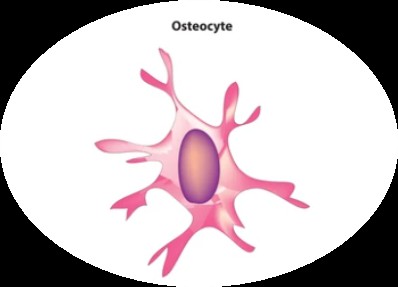Osteocyte Markers
Related Symbol Search List
Immunology Background
Overview of Osteocyte Markers

Osteoblasts are a specialized cell type, mainly distributed in mature bone tissues, that maintain bone health and function. They play important roles in osteogenesis, bone resorption, bone remodeling, and regulation of bone metabolism. In recent years, researchers have identified a series of osteocyte markers that play a key role in identifying, localizing, and studying osteoblasts. Among the commonly used bone cell markers are Biglycan, Fibronectin, SOST/Sclerostin, Alkaline phosphatase (ALP), Osteocalcin, RANKL, and OPN. There is a growing interest among researchers in using osteoblast markers as differentiation factors for mesenchymal stem cells (MSCs). Using these markers, researchers can follow the differentiation process of MSCs to osteoblasts and reveal the molecular regulatory mechanisms involved. In addition, these markers can be used to assess the bone differentiation capacity of MSCs, to screen bone tissue engineering materials for adaptability and bone regeneration capacity, and to evaluate the efficacy of bone marrow transplantation or other treatments for bone-related diseases.
Research Areas of Osteocyte Markers
Researchers have conducted in-depth studies on bone cell markers that act as differentiation factors for mesenchymal stem cells (MSCs), and the following are the research applications and potential value in different fields:
- Bone tissue engineering
Through an in-depth understanding of the characterization and expression of osteoblast markers, it is possible to guide the targeted differentiation of MSCs to osteoblasts and construct functional bone tissues under in vitro culture conditions. This provides a new therapeutic strategy for the repair of bone defects and bone regeneration that can facilitate fracture healing and therapeutic progression in bone diseases (Florencio-Silva R, et al., 2015).
- Bone metabolism and bone diseases
By analyzing the expression of osteoblast markers during the differentiation of MSCs into osteoblasts, researchers can delve into the regulatory mechanisms of bone metabolism and the development of bone diseases (Xiong J, et al., 2012). In addition, detecting the level of bone cell markers in patients can provide a reference basis for the diagnosis and evaluation of bone diseases such as osteoporosis and fractures (Ramli, F.F., et al., 2020).
- Drug screening and toxicity assessment
By using bone cell markers as differentiation factors for MSCs, more accurate and reliablein vitro models can be established for drug screening and toxicity assessment (Cramer E E A, et al., 2021). This can help improve efficiency and safety during drug development and reduce potential adverse drug reactions.
With the in-depth understanding of osteoblasts and MSCs and the continuous development of technology, the study of osteoblast markers as differentiation factors will provide more effective therapeutic options for clinical applications and promote the further development of bone tissue engineering and regenerative medicine.
Reference:
- Florencio-Silva R, Sasso G R S, Sasso-Cerri E, et al. Biology of bone tissue: structure, function, and factors that influence bone cells[J]. BioMed research international, 2015.
- Xiong J, O'Brien C A. Osteocyte RANKL: new insights into the control of bone remodeling[J]. Journal of Bone and Mineral Research, 2012, 27(3): 499-505.
- Ramli, F.F.; Chin, K.-Y. A Review of the Potential Application of Osteocyte-Related Biomarkers, Fibroblast Growth Factor-23, Sclerostin, and Dickkopf-1 in Predicting Osteoporosis and Fractures[J]. Diagnostics 2020, 10, 145.
- Cramer E E A, Ito K, Hofmann S. Ex vivo bone models and their potential in preclinical evaluation[J].Current Osteoporosis Reports, 2021, 19: 75-87.

